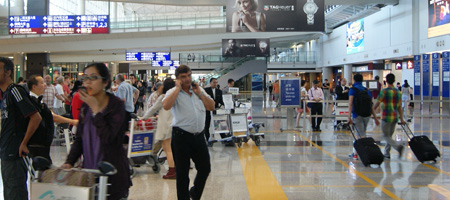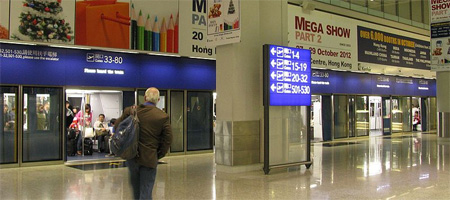Hong Kong is a city on the move, and any city on the move depends on it’s public transit. Hong Kong’s MTR corporation runs the trains and subways, which is generically referred to as “the MTR”. The system is a subway system (underground), a classic train (ground level) system, and also in some area an elevated system. The trains run to almost every area of Hong Kong, or at least get you close enough to your destination to take a taxi, bus, or even walk.
Let’s start off with the hong kong MTR map (this is the official map from the MTR for 2015):
The map isn’t to scale or anything, but it at least gives you an idea of the size of the system. You can see the Hong Kong Airport Express line that runs from Asia World Expo to Hong Kong station, colored blue-green. That is likely to be your first experience with the MTR system, and likely a very positive one. The ride from the airport to Hong Kong station takes about 23 minutes, this is the fastest train line, the orange line from Tung Chung to Hong Kong takes about 40 minutes to cover the same basic journey. The trip from Hung Hom to Lo Wu (the Chinese border crossing) takes about 45 to 50 minutes.
The full list of the lines include the Airport Express (blue-green), the Island Line (blue), the Tsuen Wan Line (red), The Kwun Tong line (green), The Tseung Kwn O line (Dark purple), the West Rail Line (Light Purple), the East Rail Line (light blue), the Man On Shan line (brown), The Tung Chung line (orange), and finally the Disney Land Resort Line (pink). The system is constantly in expansion and getting improvements, with the extension to Kennedy Town station recently added on the Island Line, and other extensions currently under construction.
The MTR train system works on a fare by distance system. Basically, the further you go, the more you pay. Payment is by using your Octopus card, single journey tickets, tourist day passes, and similar. The Airport Express has pre-paid return tickets. There are also fare concessions including certain discounts for doing the same trip more than once a day, including free return to the airport if you travel in the same day. This is particularly useful if you have a long layover between flights and want to get some fast tourist time in Hong Kong. The MTR system is a “beep in, beep out” system (except for the Airport Express), which means you been your Octopus card to enter your departure station, and you beep it again to exit, and your fare is calculated as a result. You can exchange freely from one line to another at the interchange stations without having to beep out. There is one exception station, which is the Tsim Sha Tsui and East Tsim Sha Tsui stations, where you have to beep out of one, and into the other. This is not generally recommended as it makes your journey more expensive. It is better to change at other stations.
The MTR also operates a number of light rail / surface trams in the New Territories around the Tuen Mun and Tin Shui Wai areas. Riding these is considered a separate journey.
The MTR subway and trains are such the common way to travel that many businesses will state their location relative to a station and even a particular exit. This is actually a key way to get where you are going in Hong Kong, and during your visit you will find the MTR a great way to not only get around, but to enjoy Hong Kong like a local!
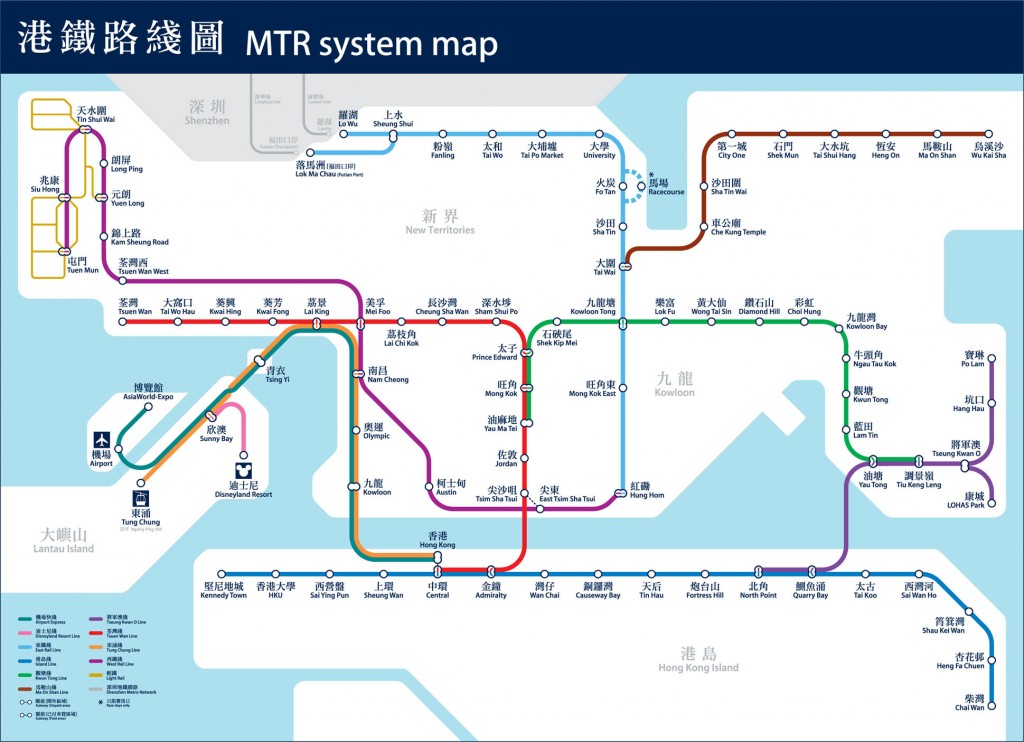
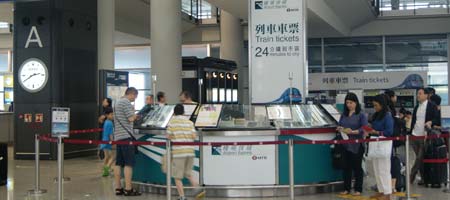
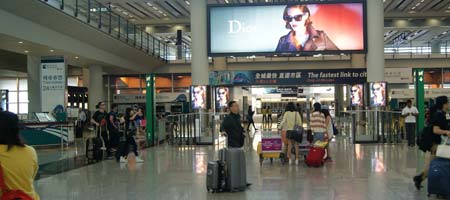
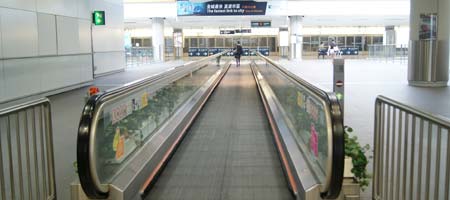
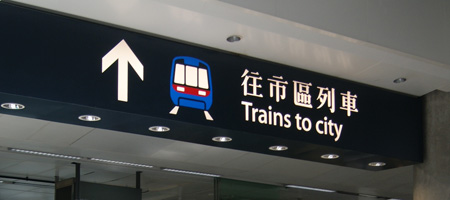
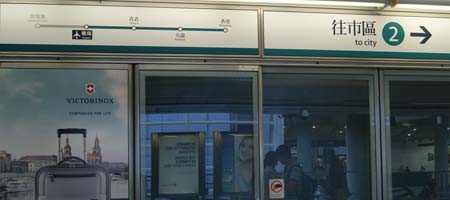
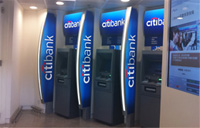 The cash machines are generally located in the area between the A and B exits, near the central elevator / escalator complex. If you came out of the A gate, that will be to your right down the concourse, and if you came out of B, it’s to the left. All of the stores and services are located along the wall between the A and B gate exits, so as you walk along from the A gate you will have shops and banks on your right, and restaurants on your left (congrats, you just saw your first Hong Kong McDonalds!). There are a couple of sets of ATM machines along the right side near the elevators. I think they are a Citibank and an HSBC, but not to worry, they have global access to most other banks. Withdrawing cash here will likely get you a much better rate than trying to exchange cash at the airport. You should probably withdraw a couple of thousand HK (which is only $250 US dollars) as you will need to spend a bit in the next few minutes to get yourself organized.
The cash machines are generally located in the area between the A and B exits, near the central elevator / escalator complex. If you came out of the A gate, that will be to your right down the concourse, and if you came out of B, it’s to the left. All of the stores and services are located along the wall between the A and B gate exits, so as you walk along from the A gate you will have shops and banks on your right, and restaurants on your left (congrats, you just saw your first Hong Kong McDonalds!). There are a couple of sets of ATM machines along the right side near the elevators. I think they are a Citibank and an HSBC, but not to worry, they have global access to most other banks. Withdrawing cash here will likely get you a much better rate than trying to exchange cash at the airport. You should probably withdraw a couple of thousand HK (which is only $250 US dollars) as you will need to spend a bit in the next few minutes to get yourself organized.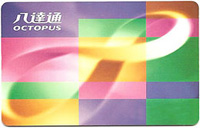 Now, for Hong Kong step 1: You need an Octopus card. Why would you want an octopus on a card? Well, actually, in Hong Kong the Octopus card is possibly one of the single most useful things you can have. It’s you method for paying for trains, buses, subways, and even the airport express train. So in that regard, it’s sort of a transit pass. But it is much more, because pretty much every small convenience store (7-eleven, Circle K, Vingo, and others) will have a machine that lets you pay for your purchases by deducting right off the Octopus card. No more fighting for change! You will actually be very surprised all of the places you can use it instead of cash, from McDonalds and KFC to local restaurant chains like Fairwood or Cafe Coral. You can use it to access the cross harbor ferries, you can even use it in some places in Shenzhen in mainland China. It’s a value added storage device that will keep you from ending up with a pocket full of change, and also help you to not slow down lines in convenience stores!
Now, for Hong Kong step 1: You need an Octopus card. Why would you want an octopus on a card? Well, actually, in Hong Kong the Octopus card is possibly one of the single most useful things you can have. It’s you method for paying for trains, buses, subways, and even the airport express train. So in that regard, it’s sort of a transit pass. But it is much more, because pretty much every small convenience store (7-eleven, Circle K, Vingo, and others) will have a machine that lets you pay for your purchases by deducting right off the Octopus card. No more fighting for change! You will actually be very surprised all of the places you can use it instead of cash, from McDonalds and KFC to local restaurant chains like Fairwood or Cafe Coral. You can use it to access the cross harbor ferries, you can even use it in some places in Shenzhen in mainland China. It’s a value added storage device that will keep you from ending up with a pocket full of change, and also help you to not slow down lines in convenience stores!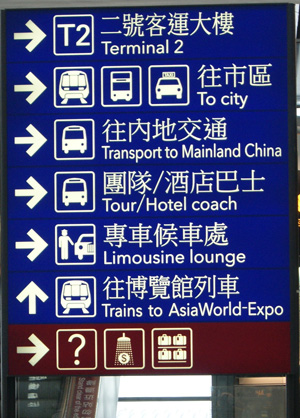 Okay, keeping up with
Okay, keeping up with 